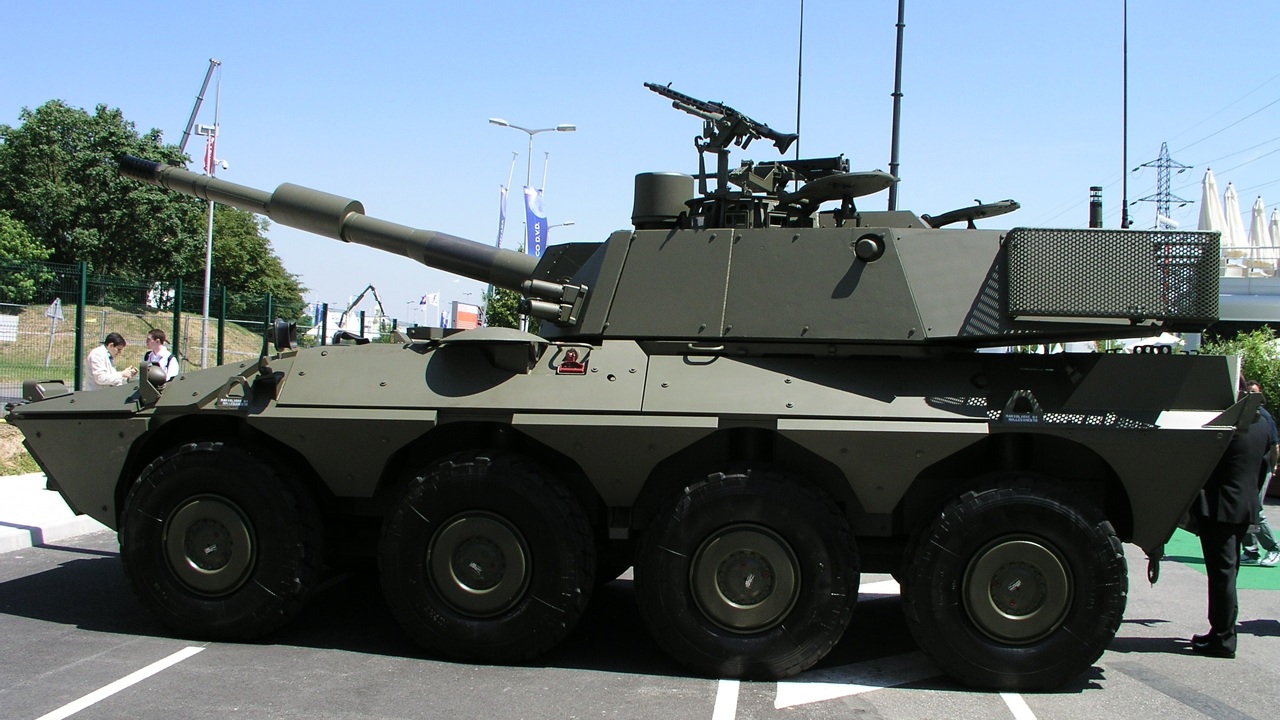The Centauro can reach a top speed of 67 mph—which means it can take a shot and retreat, instead of engaging in a slug match with an adversary’s main battle tank.
In the spring of 2023, reports circulated that NATO member Italy had been “secretly” supplying Kyiv with its B1 Centauro tank destroyers. While that claim turned out not to be true, it was again reported this week that the wheeled armored vehicles could be sent to aid Ukraine, with the first Centauros set to arrive in the coming days.
Images have already begun to circulate on social media of the vehicles being loaded on transport trucks, according to a report from the Defence Blog. The number of vehicles that could be set has yet to be confirmed, but Ukraine can use every vehicle—as its war with Russia entered the fourth year on February 24.
The ongoing engagement, which began when Russia launched its unprovoked invasion into Ukraine eight years after it illegally annexed Crimea, is now the longest and deadliest conflict the European continent has seen since the Second World War.
The Centauro is a Tank Destroyer—Not a Tank
The Italian-made B1 Centauro is an 8×8 wheeled vehicle, developed by the Iveco Fiat-OTO Melara (CIO) consortium at the end of the Cold War. Iveco Fiat oversaw the design of the hull and powerplant, while Oto Melara designed the turret and weapons systems.
Though sometimes described as a wheeled tank, it is actually a “tank destroyer,” armed with a 105mm rifled main gun that can fire a variety of NATO-standard rounds, including armor-piercing fin-stabilized discarding sabot (APFSCS) ordnance to a range of 3,000 meters (1.86 miles).
Given that it is a wheeled armored vehicle, the Cenaturo has earned comparisons to the French-made AMX-10RC, which has been designated as a “light tank” by the French military. The AMX-10RC has been among the vehicles that Ukraine used in its counter-invasion into the Russian Kursk Oblast last summer.
However, as the Ukrainian Defense Express noted, the French 6×6 AMX-10RC “is a reconnaissance vehicle and in the realities of war it is used as self-propelled artillery,” while the B1 Centauro was designed from the start to perform as a true tank hunter/killer.
Lightly Armored But Fast-Moving
The Centauro is relatively lightly armored—with “protection against 14.5 mm caliber fire in the circular projection and 25 mm in the frontal projection”—but as noted, its main gun can hit targets a considerable distance.
Moreover, its V6 turbo-Diesel 520 horsepower engine allows the Centauro to reach a top speed of 67 mph (108 km/h)—which means it can take a shot and retreat, instead of engaging in a slug match with an adversary’s main battle tank (MBT), where it would be seriously outclassed.
Its wheels could give it an advantage this spring, as both sides will have to deal with the spring thaw and the time of mud.
“The vehicle’s chassis is unique in that not only the first and second axles are steered, but also the fourth axle at low speeds, resulting in a turning radius of 9 meters,” Defense Express added. However, unlike the Soviet-designed armored personnel carriers (APCs) and infantry fighting vehicles (IFVs) now in service with the Russian military (and to a lesser extent with Ukrainian forces), the Centauro isn’t amphibious.
Around 500 of the original Centauro models had been produced, and it was primarily operated by the Italian Army. Production of an improved model, the Centauro II, with a 120mm main gun began in 2021. It is expected that Rome would be providing Kyiv with its earlier variants. The Italian military is reported to have around 259 B1 Centauro tank destroyers in service, as 141 had been transferred to Jordan.
About the Author: Peter Suciu
Peter Suciu is a Michigan-based writer. He has contributed to more than four dozen magazines, newspapers, and websites with over 3,200 published pieces over a twenty-year career in journalism. He regularly writes about military hardware, firearms history, cybersecurity, politics, and international affairs. Peter is also a Contributing Writer for Forbes and Clearance Jobs. You can follow him on Twitter: @PeterSuciu. You can email the author: [email protected].
Image: Shutterstock.
